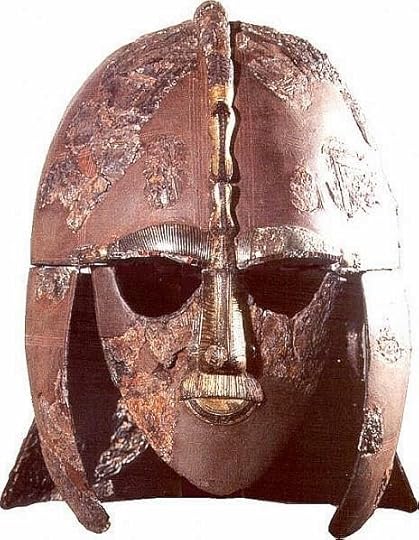MaryAnn Bernal's Blog, page 272
June 6, 2014
Sold! Nobel Prize for Neutron Discovery Auctioned for $329,000
By Megan Gannon
 The 1935 Nobel Prize Medal that was presented to James Chadwick for his discovery of the neutron.
The 1935 Nobel Prize Medal that was presented to James Chadwick for his discovery of the neutron.
Credit: Courtesy of Sotheby's The 1935 Nobel Prize in physics that was awarded to English scientist James Chadwick for his discovery of the neutron was sold at auction this week for $329,000.
Sotheby's auction house, which handled the sale yesterday (June 3) in New York, estimated that the Nobel gold medal and its accompanying diploma would sell for between $200,000 and $400,000. Sotheby's did not release any information about the buyer. The seller was a collector of medals and coins, who bought Chadwick's Nobel gold medal and diploma from the famed physicist about 20 years ago.
With this week's auction, the seller may have been trying to strike the same fortune as Francis Crick's family. The medal awarded to Crick in 1953 for the discovery of DNA's twisted ladder shape was offered at auction last year, marking the first public sale of a Nobel Prize. With little precedent for the sale, Heritage Auctions had valued Crick's medal and diploma at $500,000. It far exceeded expectations, selling for more than $2 million.
Chadwick studied under British scientist Ernest Rutherford, who is considered the father of nuclear physics, and whose model of the atom (which was the first to show that much of its charge was concentrated in a nucleus) earned him a Nobel Prize in chemistry in 1908.
Decades later, Chadwick proved the theoretically predicted existence of neutrons — electrically neutral particles in the nucleus of an atom that have slightly more mass than protons. Scientists soon understood that neutrons could be used in nuclear chain reactions to release massive amounts of energy. Chadwick, who was knighted in 1945, was involved in developing the first atomic bombs during World War II, as head of the British contingent of the Manhattan Project. He even witnessed the Trinity bomb test — the world's first nuclear explosion — on July 16, 1945, at the Alamogordo Air Base in New Mexico.
http://www.livescience.com/46092-nobel-medal-neutron-discovery-sold.html
 The 1935 Nobel Prize Medal that was presented to James Chadwick for his discovery of the neutron.
The 1935 Nobel Prize Medal that was presented to James Chadwick for his discovery of the neutron.Credit: Courtesy of Sotheby's The 1935 Nobel Prize in physics that was awarded to English scientist James Chadwick for his discovery of the neutron was sold at auction this week for $329,000.
Sotheby's auction house, which handled the sale yesterday (June 3) in New York, estimated that the Nobel gold medal and its accompanying diploma would sell for between $200,000 and $400,000. Sotheby's did not release any information about the buyer. The seller was a collector of medals and coins, who bought Chadwick's Nobel gold medal and diploma from the famed physicist about 20 years ago.
With this week's auction, the seller may have been trying to strike the same fortune as Francis Crick's family. The medal awarded to Crick in 1953 for the discovery of DNA's twisted ladder shape was offered at auction last year, marking the first public sale of a Nobel Prize. With little precedent for the sale, Heritage Auctions had valued Crick's medal and diploma at $500,000. It far exceeded expectations, selling for more than $2 million.
Chadwick studied under British scientist Ernest Rutherford, who is considered the father of nuclear physics, and whose model of the atom (which was the first to show that much of its charge was concentrated in a nucleus) earned him a Nobel Prize in chemistry in 1908.
Decades later, Chadwick proved the theoretically predicted existence of neutrons — electrically neutral particles in the nucleus of an atom that have slightly more mass than protons. Scientists soon understood that neutrons could be used in nuclear chain reactions to release massive amounts of energy. Chadwick, who was knighted in 1945, was involved in developing the first atomic bombs during World War II, as head of the British contingent of the Manhattan Project. He even witnessed the Trinity bomb test — the world's first nuclear explosion — on July 16, 1945, at the Alamogordo Air Base in New Mexico.
http://www.livescience.com/46092-nobel-medal-neutron-discovery-sold.html

Published on June 06, 2014 14:13
Climate change threatens to sweep away historic Jamestown settlement
Oldest known English settlement in America at risk from rising seas, with some of the archaeological digs already destroyed
• Landmark US sites at risk due to climate change
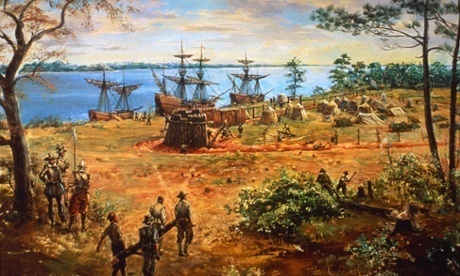 The stockade fort at Jamestown, Virginia, the first permanent English settlement in America, circa 1610. Photograph: Hulton Archive/Getty Images
The stockade fort at Jamestown, Virginia, the first permanent English settlement in America, circa 1610. Photograph: Hulton Archive/Getty Images
Jamestown Island, America's oldest known permanent European settlement runs the risk of being swept away by rising seas, with some sections of it already beneath the James River.
Interior Secretary Sally Jewell got a firsthand look Thursday at the effect of climate change on ever-receding coastline Jamestown Island, Virgina.
Jewell trekked around the island, and heard of the devastation in 2003 when Hurricane Isabel raked the low-lying landscape. The storm left many parts of the island underwater and destroyed thousands of artifacts retrieved from archaeological digs. Many are still being restored.
Jewell told the Associated Press that Jamestown is certainly vulnerable.
"I know enough now having been in this job looking at vulnerable sites that this is a highly vulnerable site," Jewell said. "We don't have very many places in the United States that talk about the super-early history of settlers connecting with the native people of the land, so this is a really an important place."
Dorothy Geyer, a Park Service natural resource specialist, said a one-and-a-half-foot rise in sea level would put 60% of the island under water and a four-foot-plus rise would increase that number to 80%. Jewell said her visit to Jamestown is part of the Obama administration's push to address climate change.
"It's very clear we have global warming and sea level rise and this is a hot spot for it," Jewell said. "And what's at risk is the history of our country."
Jamestown was settled in 1607 by Europeans, including Captain John Smith. When European settlers arrived, there already was a thriving population of Native Americans led by paramount Chief Powhatan. The remnants of both native people and settlers can be found on the island.
The Tidewater of Virginia and sections of the Chesapeake Bay are among the most vulnerable to sea change in the world. While climate change is a big factor, the region is also sinking the result of a meteor that gouged out the Chesapeake Bay 35m years ago.
The tour followed a report in May by the Union of Concerned Scientists that lists Jamestown as among 30 historic and cultural sites in the nation that are at risk because of climate change.
Jewell trekked through mosquito-infested wetlands and through stands of loblolly during the tour. At Black Point, the eastern-most point of land on the island, she saw where waters had reclaimed 20ft of the island through the years.
Jewell visited a research center where thousands of artifacts are still being restored. More than one million artifacts pipe stems, ceramic cookware, silver settings were damaged. Jewell later had discussions with climate scientists.
http://www.theguardian.com/world/2014/jun/05/jamestown-settlement-rising-sea-level-threat

• Landmark US sites at risk due to climate change
 The stockade fort at Jamestown, Virginia, the first permanent English settlement in America, circa 1610. Photograph: Hulton Archive/Getty Images
The stockade fort at Jamestown, Virginia, the first permanent English settlement in America, circa 1610. Photograph: Hulton Archive/Getty ImagesJamestown Island, America's oldest known permanent European settlement runs the risk of being swept away by rising seas, with some sections of it already beneath the James River.
Interior Secretary Sally Jewell got a firsthand look Thursday at the effect of climate change on ever-receding coastline Jamestown Island, Virgina.
Jewell trekked around the island, and heard of the devastation in 2003 when Hurricane Isabel raked the low-lying landscape. The storm left many parts of the island underwater and destroyed thousands of artifacts retrieved from archaeological digs. Many are still being restored.
Jewell told the Associated Press that Jamestown is certainly vulnerable.
"I know enough now having been in this job looking at vulnerable sites that this is a highly vulnerable site," Jewell said. "We don't have very many places in the United States that talk about the super-early history of settlers connecting with the native people of the land, so this is a really an important place."
Dorothy Geyer, a Park Service natural resource specialist, said a one-and-a-half-foot rise in sea level would put 60% of the island under water and a four-foot-plus rise would increase that number to 80%. Jewell said her visit to Jamestown is part of the Obama administration's push to address climate change.
"It's very clear we have global warming and sea level rise and this is a hot spot for it," Jewell said. "And what's at risk is the history of our country."
Jamestown was settled in 1607 by Europeans, including Captain John Smith. When European settlers arrived, there already was a thriving population of Native Americans led by paramount Chief Powhatan. The remnants of both native people and settlers can be found on the island.
The Tidewater of Virginia and sections of the Chesapeake Bay are among the most vulnerable to sea change in the world. While climate change is a big factor, the region is also sinking the result of a meteor that gouged out the Chesapeake Bay 35m years ago.
The tour followed a report in May by the Union of Concerned Scientists that lists Jamestown as among 30 historic and cultural sites in the nation that are at risk because of climate change.
Jewell trekked through mosquito-infested wetlands and through stands of loblolly during the tour. At Black Point, the eastern-most point of land on the island, she saw where waters had reclaimed 20ft of the island through the years.
Jewell visited a research center where thousands of artifacts are still being restored. More than one million artifacts pipe stems, ceramic cookware, silver settings were damaged. Jewell later had discussions with climate scientists.
http://www.theguardian.com/world/2014/jun/05/jamestown-settlement-rising-sea-level-threat

Published on June 06, 2014 14:08
Wreckage from Secret Cold War Spy Mission Revealed in Aerial Images
By Jillian Rose Lim
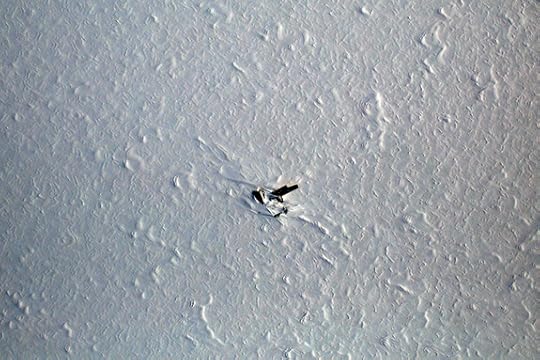 An old war plane, the Kee Bird, sits frozen in Greenland.
An old war plane, the Kee Bird, sits frozen in Greenland.
Credit: IceBridge Digital Mapping System
In 1947, a crash landing left wreckage from a U.S. Army plane frozen in time on a remote ice sheet in northwest Greenland.
A new aerial image, released by NASA's Earth Observatory, shows the remains of the B-29 Superfortress plane, named Kee Bird, which was en route to the North Pole for a top secret mission during the Cold War.
After encountering bad weather and running out of fuel, the plane made an emergency landing on a lake frozen beneath hard-packed snow. The crew of 11 men spent about three days in the tundra before they were rescued. Forty years later, famous test pilot Darryl Greenamyer and his team tried to restore the warbird, but the plane caught fire and the team abandoned their project. Now, more than 50 years after the Kee Bird landed, wind-blown ice and snow continue to bury what's left of it.
The photo was taken by a digital camera attached to NASA's P-3 Orion airplane on May 1. The research plane is part of Operation IceBridge, an eight-year NASA mission that started in 2009 and began its 2014 Arctic campaign this past March.
Operation IceBridge surveys glaciers, ice sheets and sea ice in the Arctic and Antarctic to monitor how polar ice changes over time. Scientists use instruments attached to fixed-wing aircraft; those tools include radars, lasers and the Digital Mapping System (DMS) that snapped the image of Kee Bird.
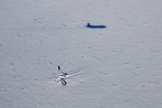
[image error] IceBridge's P-3 research plane shadows over the Kee Bird
IceBridge's P-3 research plane shadows over the Kee Bird
Credit: Michael Studinger, NASA GSFC
View full size imageThe missions often bring back stunning images and discover objects buried underneath the ice. In August 2013, IceBridge researchers found Earth's longest canyon beneath Greenland's ice sheet. The gorge reaches about 2,600 feet (800 meters) deep and 6 miles (10 kilometers) wide, making it comparable to America's Grand Canyon.
When it comes to the Arctic, landmarks like the Kee Bird can lend beauty to an otherwise blank canvas.
"When you spend eight hours a day, five days a week staring at a blinding white ice sheet, something interesting to look at comes as a rather welcome sight," John Sonntag, a researcher for NASA's Wallop Flight Facility told the Earth Observatory. Sontaag has been collecting photos of the Kee Bird since the early 1990s.
Another image, also released by the Earth Observatory, shows both the Kee Bird and the shadow of the P-3 Orion above the plane's wreckage. IceBridge campaign leader Michael Studinger took the photo, and according to the Earth Observatory, the thin lines in the ice around the Bird are most likely trails from polar bears in the area.
http://www.livescience.com/46059-army-plane-wreck-greenland-photo.html

 An old war plane, the Kee Bird, sits frozen in Greenland.
An old war plane, the Kee Bird, sits frozen in Greenland. Credit: IceBridge Digital Mapping System
In 1947, a crash landing left wreckage from a U.S. Army plane frozen in time on a remote ice sheet in northwest Greenland.
A new aerial image, released by NASA's Earth Observatory, shows the remains of the B-29 Superfortress plane, named Kee Bird, which was en route to the North Pole for a top secret mission during the Cold War.
After encountering bad weather and running out of fuel, the plane made an emergency landing on a lake frozen beneath hard-packed snow. The crew of 11 men spent about three days in the tundra before they were rescued. Forty years later, famous test pilot Darryl Greenamyer and his team tried to restore the warbird, but the plane caught fire and the team abandoned their project. Now, more than 50 years after the Kee Bird landed, wind-blown ice and snow continue to bury what's left of it.
The photo was taken by a digital camera attached to NASA's P-3 Orion airplane on May 1. The research plane is part of Operation IceBridge, an eight-year NASA mission that started in 2009 and began its 2014 Arctic campaign this past March.
Operation IceBridge surveys glaciers, ice sheets and sea ice in the Arctic and Antarctic to monitor how polar ice changes over time. Scientists use instruments attached to fixed-wing aircraft; those tools include radars, lasers and the Digital Mapping System (DMS) that snapped the image of Kee Bird.

[image error]
 IceBridge's P-3 research plane shadows over the Kee Bird
IceBridge's P-3 research plane shadows over the Kee BirdCredit: Michael Studinger, NASA GSFC
View full size imageThe missions often bring back stunning images and discover objects buried underneath the ice. In August 2013, IceBridge researchers found Earth's longest canyon beneath Greenland's ice sheet. The gorge reaches about 2,600 feet (800 meters) deep and 6 miles (10 kilometers) wide, making it comparable to America's Grand Canyon.
When it comes to the Arctic, landmarks like the Kee Bird can lend beauty to an otherwise blank canvas.
"When you spend eight hours a day, five days a week staring at a blinding white ice sheet, something interesting to look at comes as a rather welcome sight," John Sonntag, a researcher for NASA's Wallop Flight Facility told the Earth Observatory. Sontaag has been collecting photos of the Kee Bird since the early 1990s.
Another image, also released by the Earth Observatory, shows both the Kee Bird and the shadow of the P-3 Orion above the plane's wreckage. IceBridge campaign leader Michael Studinger took the photo, and according to the Earth Observatory, the thin lines in the ice around the Bird are most likely trails from polar bears in the area.
http://www.livescience.com/46059-army-plane-wreck-greenland-photo.html

Published on June 06, 2014 14:03
70th anniversary of D-Day - a tribute to those who served
 D-Day invasion June 1944: The spies, secrecy and codewords behind the Normandy Landings The D-Day invasion June 1944 prompted the Normandy Landings. Seventy years on, we look at some of the stories behind the planning which required precision and secrecy. Report by Ashley Fudge. Honor Thy Fallen: A Memorial Day Tribute 2014
D-Day invasion June 1944: The spies, secrecy and codewords behind the Normandy Landings The D-Day invasion June 1944 prompted the Normandy Landings. Seventy years on, we look at some of the stories behind the planning which required precision and secrecy. Report by Ashley Fudge. Honor Thy Fallen: A Memorial Day Tribute 2014 
Published on June 06, 2014 04:03
History Trivia - Ashmolean Museum in Oxford, England, opens - the world's first university museum.
June 6
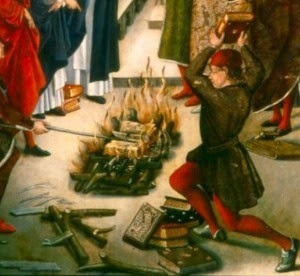 1242 Twenty four wagonloads of Talmudic (Hebrew instruction)books were burned in Paris.
1242 Twenty four wagonloads of Talmudic (Hebrew instruction)books were burned in Paris.
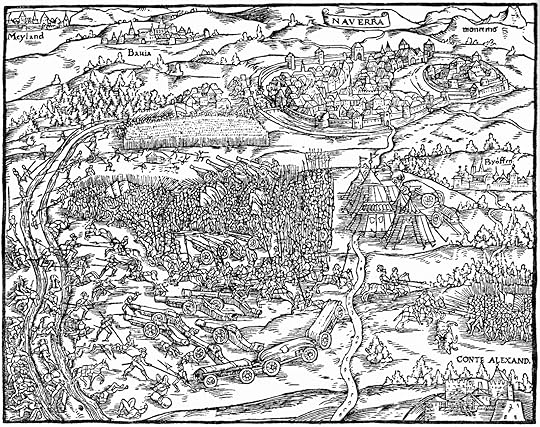 1513 Italian Wars: Battle of Novara. Swiss troops defeated the French under Louis de la Tremoille, forcing the French to abandon Milan. Duke Massimiliano Sforza was restored.
1513 Italian Wars: Battle of Novara. Swiss troops defeated the French under Louis de la Tremoille, forcing the French to abandon Milan. Duke Massimiliano Sforza was restored.
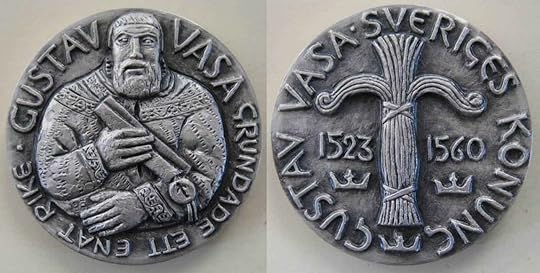
1523 Gustav Vasa was elected King of Sweden, marking the end of the Kalmar Union, which had united the three kingdoms of Denmark, Norway (with Iceland, Greenland, Faroe Islands, Shetland, and Orkney),and Sweden.
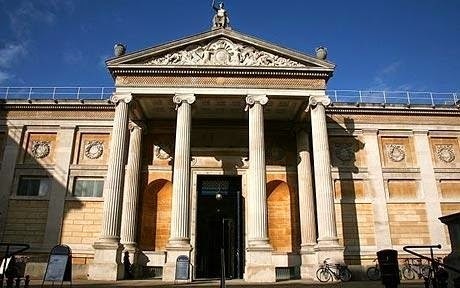
1683 The Ashmolean Museum in Oxford, England, opened as the world's first university museum.

 1242 Twenty four wagonloads of Talmudic (Hebrew instruction)books were burned in Paris.
1242 Twenty four wagonloads of Talmudic (Hebrew instruction)books were burned in Paris.  1513 Italian Wars: Battle of Novara. Swiss troops defeated the French under Louis de la Tremoille, forcing the French to abandon Milan. Duke Massimiliano Sforza was restored.
1513 Italian Wars: Battle of Novara. Swiss troops defeated the French under Louis de la Tremoille, forcing the French to abandon Milan. Duke Massimiliano Sforza was restored. 
1523 Gustav Vasa was elected King of Sweden, marking the end of the Kalmar Union, which had united the three kingdoms of Denmark, Norway (with Iceland, Greenland, Faroe Islands, Shetland, and Orkney),and Sweden.

1683 The Ashmolean Museum in Oxford, England, opened as the world's first university museum.

Published on June 06, 2014 04:02
June 5, 2014
Come and support the D Day event at Foyles Bristol June 7th 2014
 D Day event at Foyles in Bristol
D Day event at Foyles in BristolDate: June 07, 2014 02:30PM
Venue: Foyles Bristol England
Location: The United Kingdom
Silverwood books are holding a special D Day event at Foyles at Bristol, England. Saturday afternoon. Elisabeth Marrion’s latest book 'Liverpool Connection' will be launched on June 7th. . Ms. Marrion will be there for a book signing. Come along if you can
Cabot Circus, BristolFoyles, 6 Quakers Friars, Cabot Circus, Bristol, BS1 3BU
Meet Elisabeth Marrion, author of The Night I Danced with Rommel as she launches the second novel in the series, Liverpool Connection


Published on June 05, 2014 05:22
History Trivia - Titus and his Roman legions breach the middle wall of Jerusalem
June 5

70 Titus and his Roman legions breached the middle wall of Jerusalem in the Siege of Jerusalem.

1099 Members of the First Crusade witnessed an eclipse of the moon and interpreted it as a sign they would recapture Jerusalem.

1294 Saint Celestine V was elected Roman Catholic pope. He was unhappy with the office and abdicated before the year was out.

1341 Edmund of Langley, first Duke of York, son of Edward III of England was born.
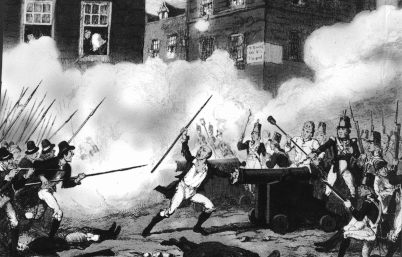
1798 The Battle of New Ross: The attempt to spread United Irish Rebellion into Munster was defeated.


70 Titus and his Roman legions breached the middle wall of Jerusalem in the Siege of Jerusalem.

1099 Members of the First Crusade witnessed an eclipse of the moon and interpreted it as a sign they would recapture Jerusalem.

1294 Saint Celestine V was elected Roman Catholic pope. He was unhappy with the office and abdicated before the year was out.

1341 Edmund of Langley, first Duke of York, son of Edward III of England was born.

1798 The Battle of New Ross: The attempt to spread United Irish Rebellion into Munster was defeated.

Published on June 05, 2014 05:10
June 4, 2014
The Anglo-Saxons in Britain
Published on June 04, 2014 15:45
Dinosaur Fossil Smuggler Gets 3-Month Sentence
[image error] [image error]
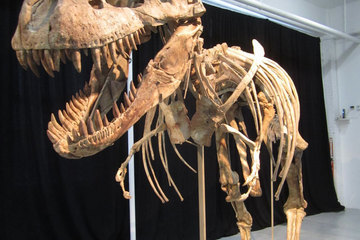
 Eric Prokopi, who pleaded guilty to charges he smuggled this Tarbosaurus skeleton and other fossils into the United States, was sentenced to three months in federal prison on Tuesday, June 3, 2014.
Eric Prokopi, who pleaded guilty to charges he smuggled this Tarbosaurus skeleton and other fossils into the United States, was sentenced to three months in federal prison on Tuesday, June 3, 2014.Credit: Wynne Parry for Live Science View full size image
NEW YORK — An international drama centering on the restored skeleton of a predatory dinosaur began on the auction block two years ago and came to a close here in a Manhattan courtroom today (June 3). Eric Prokopi, the man who pleaded guilty to charges he smuggled these fossils and others into the United States, was sentenced to three months in federal prison.
Prokopi "is clearly not a bad person, but he has done a bad thing," said U.S. District Court Judge Alvin Hellerstein before issuing the sentence. "The punishment must deter others."
The outcome upset Prokopi and his family, said Prokopi's attorney Georges Lederman afterward. "He was hoping for probation."
One dinosaur leads to many
On Dec. 27, 2012, Prokopi pleaded guilty to charges he made misleading or false statements on U.S. customs forms when importing dinosaur fossils, and that he transported fossils into the United States and across state lines knowing they had been taken illegally from Mongolia. Together, these charges carried a cumulative sentence of as much as 17 years, plus possible fines. [See Photos of the Smuggled Dinosaur Skeleton]
In court, however, the prosecution supported leniency, citing Prokopi's cooperation.
"We went into the case pursuing one Tarbosaurus bataar skeleton ," said Martin Bell, an assistant U.S. attorney in the Southern District of New York. "Speaking with Mr. Prokopi, we were alerted to the existence [of many other dinosaur fossils], also Mongolian property, of which we were not aware."
The federal investigators recovered these fossils from Prokopi and his contacts, and made arrangements to repatriate the finds to Mongolia. The specimens, mostly from Prokopi and his business partner in the England, Chris Moore, include a number of Tarbosaurus specimens, some nearly complete and others fragmentary. It also includes dinosaur eggs and fossils from duck-billed dinosaurs called hadrosaurs, frilled protoceratops, armored ankylosaurs, the roosterlike Gallimimus and others.
End to an open black market?
The story began when Prokopi attempted to sell an 8-foot-tall (2.4 meters) and 24-foot-long (7.3 m)Tarbosaurus, an Asian relative to the North American Tyrannosaurus rex ,that Prokopi had prepared at a public auction in May 2012. News of the impending sale of the T. rex-like dinosaur fossils reached Mongolian President Elbegdorj Tsakhia, who sought to stop the sale. Elbegdorjsaid these fossils were most likely taken illegally from his country, where law makes fossils state property. Paleontologists from Mongolia and North America supported the president's claim.
At auction, the Tarbosaurus attracted a bid of just over $1 million, though the fossil never sold. The federal government sought to seize the skeleton; Prokopi defended his claim on it, and found himself facing criminal charges related to fossil smuggling. [Image Gallery: Amazing Dinosaur Fossils]
Before this case, Mongolian fossils were easily bought and sold in the United States, regardless of Mongolian law. However, this case has changed things, said Robert Painter, an American attorney who represents President Elbegdorj."You have seen an evaporation of smuggled fossils being offered for sale in the U.S," Painter said.
Painter said he, too, had expected Prokopi to receive probation, because of the man's cooperation with investigators, but that the three-month sentence would further deter the sale of ill-gotten fossils. "I think [the sentencing is] adding this last chapter to this story: Not only do the smuggled items get returned, but you can go to jail as a smuggler. That is the most chilling of all effects I can imagine," he told Live Science.
Preparing to rebuild
Prokopi’s version of eventsProkopi's version of eventsdid not sit well with Judge Hellerstein. The commercial paleontologist said he believed permits could be obtained to export fossils legally from Mongolia and did not realize he lacked those permits until after the fossils had left the country. The judge wanted to ascertain whether or not Prokopi accepted full responsibility for his actions. (The Mongolian government has never issued export permits for commercial sale, Painter said.)
Once Prokopi realized the fossils had been taken out of Mongolia illegally, "he was committed" to keeping the fossils and went on to falsify customs forms so as to bring the specimens from England into the United States, Lederman explained to the judge.
Prior to hearing his sentence, Prokopi apologized to the judge. "I have not lost my love for paleontology," Prokopi said. "I hope to rebuild my business with more emphasis on proper documentation on everything." He said he regretted the negative publicity his case has attracted for commercial paleontology.
Hellerstein originally sentenced Prokopi to six months in federal custody; after some discussion with Lederman, the judge lowered that sentence to three months, followed by three months in a halfway house, and a year of probation. Hellerstein waved a $10,000 fine after Lederman noted that, since the case began, Prokopi has gone through bankruptcy and is in debt. His sentence also includes 100 hours of community service, which Hellerstein recommended be served in a natural history museum.
http://www.livescience.com/46085-dinosaur-fossil-smuggler-gets-3-month-sentence.html

Published on June 04, 2014 15:39
History Trivia - first historic solar eclipse recorded in China.
June 4

781 BC – The first historic solar eclipse was recorded in China.

1039 Henry III became Holy Roman Emperor.

1070 the process of making Roquefort cheese was discovered by an anonymous shepherd in a cave near Roquefort, France.


781 BC – The first historic solar eclipse was recorded in China.

1039 Henry III became Holy Roman Emperor.

1070 the process of making Roquefort cheese was discovered by an anonymous shepherd in a cave near Roquefort, France.

Published on June 04, 2014 04:38

